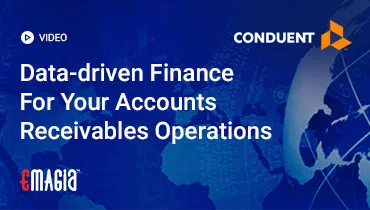Exploring the Financial, Operational, and Strategic Risks of Unmanaged Accounts Receivable
In the world of business, it’s a simple equation: you sell goods or services, and you expect to get paid. When customers purchase on credit, they become debtors, and their unpaid invoices are known as accounts receivable. While a high number of sales might seem like a sign of success, a ballooning number of debtors can be a critical red flag. It’s an issue that extends far beyond a simple accounting entry. The reality is that the consequences of having a lot of debtors can create a domino effect of problems that ripple throughout your entire organization, threatening its financial health, operational efficiency, and long-term viability. This guide will take a deep dive into the profound effects of unmanaged accounts receivable, from the direct impact on cash flow to the subtle erosion of your company’s reputation. By understanding these risks, you can take proactive steps to safeguard your business and ensure its future growth.
Part 1: The Core Problem – Understanding the Financial Drain
Before examining the wider consequences, we must first understand the most immediate and significant impact: the financial toll. A large number of debtors directly translates to a large amount of money that is owed to your business but not yet in your bank account.
- Cash Flow and Liquidity: We will explain how overdue payments create a severe cash flow squeeze, making it difficult to pay your own suppliers, cover operating expenses, or invest in new opportunities. This is the single most pressing issue for businesses with high receivables.
- The Cost of Capital: We will detail how businesses often resort to short-term loans or lines of credit to cover the gap left by unpaid invoices, incurring interest charges and increasing their overall debt burden. This can turn a profitable sale into a loss-making one.
- Profitability and Write-Offs: A deep dive into how unpaid invoices eventually become bad debt, which must be written off as an expense. This directly reduces your net profit and can significantly affect your bottom line.
Part 2: The Operational and Administrative Burden
A large number of debtors doesn’t just impact your finances; it creates a massive operational headache that drains resources and distracts your team from their core responsibilities.
The Strain on Your Collections Team
- Intense Manual Labor: We will outline the manual, time-consuming process of chasing after late payments. This includes making phone calls, sending emails, and mailing reminder letters, which can overwhelm a small team.
- Decreased Efficiency: We will explore how staff members are forced to spend their time on collections instead of more strategic, value-added tasks like credit analysis, customer support, or process improvement.
- Increased Administrative Costs: We will detail the hidden costs associated with chasing payments, including labor hours, postage, and potential legal fees for escalating cases. These costs chip away at your profit margins.
The Erosion of Customer Relationships
- The Delicate Balance: We will discuss the challenge of maintaining a positive relationship with customers while aggressively pursuing payment. The wrong approach can damage goodwill and lead to a loss of future business.
- Dispute Resolution: We will explain how late payments are often linked to disputes over invoices, requiring a significant amount of time and effort from your team to resolve.
Part 3: Strategic Consequences and Long-Term Risks
Beyond the day-to-day issues, a high number of debtors can pose a serious threat to your business’s long-term strategic goals and overall market position.
Stifled Growth and Competitiveness
- Inability to Invest: We will describe how a lack of working capital, tied up in unpaid invoices, prevents you from investing in new products, technology, or marketing campaigns that are essential for staying competitive.
- Missed Opportunities: We will explain how you may be forced to pass on large contracts or new business ventures because you lack the financial liquidity to support them.
- Market Perception: We will discuss how your business’s inability to collect payments can be perceived negatively by investors, creditors, and even new customers, making it harder to secure financing or attract new business.
The Risk of Bad Debt and Bankruptcy
- The Domino Effect: We will detail how a cascade of non-payments from several large debtors can trigger a severe financial crisis, potentially leading to your own insolvency.
- Legal and Compliance Risks: We will touch upon the legal complications and costs associated with pursuing debt through litigation, as well as the potential for regulatory issues.
Emagia: A Path to Proactive Accounts Receivable Management
The manual management of a high number of debtors is a costly and inefficient process that puts your business at risk. Emagia provides a transformative solution that leverages artificial intelligence to automate and optimize the entire order-to-cash cycle. Our platform acts as a digital co-pilot for your finance teams, moving beyond simple collections to intelligent, proactive management. By utilizing AI and machine learning, Emagia can predict payment behaviors, automatically prioritize accounts for collection, and personalize dunning communications. The system identifies potential payment risks before they escalate, providing you with actionable insights to mitigate bad debt. By automating routine tasks and giving your teams a clear, data-driven view of your accounts receivable, our solution helps you significantly reduce Days Sales Outstanding (DSO), improve cash flow, and ultimately, safeguard your business against the many consequences of unmanaged debt.
Frequently Asked Questions About Debtors and Accounts Receivable
What is the difference between accounts receivable and debtors?
Accounts receivable is the total amount of money owed to your company from all your credit sales. Debtors are the individual customers or entities that owe you that money. A high number of debtors contributes to a large accounts receivable balance.
How can I find out if a prospective customer is a high-risk debtor?
You can perform a thorough credit check, request trade references from their suppliers, and analyze their financial statements. These steps provide a clear picture of their payment history and financial stability before you extend credit.
What is an ideal Days Sales Outstanding (DSO) number?
DSO measures the average number of days it takes for your company to collect its revenue after a sale. An ideal DSO is generally low, indicating that you are collecting payments quickly. A high DSO is a strong indicator of unmanaged accounts receivable.
Can a high number of debtors impact my business’s ability to get a loan?
Yes. When a lender assesses your business, they look at your financial health. A high accounts receivable balance, especially with a long collection period, is seen as a sign of poor cash flow and financial instability, making it more difficult to secure a loan.
What is the best way to reduce the number of debtors in my business?
The best way is to implement a proactive and robust accounts receivable management strategy. This includes having a clear credit policy, using automated reminders for invoices, offering early payment discounts, and utilizing technology to streamline the collections process.



